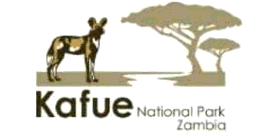 Zambia’s Record Wildlife Translocation Revitalizes Kafue National Park and Boosts Eco-Tourism
Zambia’s Record Wildlife Translocation Revitalizes Kafue National Park and Boosts Eco-Tourism
Zambia has made conservation history with its largest-ever wildlife translocation, relocating an impressive 1,650 wildebeest and 300 zebras from the vast grasslands of Liuwa Plain National Park to the expansive Kafue National Park. This landmark operation was executed through a strategic partnership involving the Ministry of Tourism, African Parks, the Barotse Royal Establishment, and the Department of National Parks and Wildlife (DNPW), underscoring Zambia’s leadership in innovative conservation and sustainable tourism development.
The ambitious translocation aims to restore ecological balance and enhance biodiversity within Kafue, one of Africa’s largest protected areas. By reintroducing these iconic herbivores, the initiative is set to rejuvenate grazing patterns, support predator populations, and enrich the overall wildlife viewing experience—key factors that elevate the park’s appeal to safari enthusiasts and nature lovers alike. The move also reflects a broader vision to stimulate local economies through increased eco-tourism, creating jobs and business opportunities in communities surrounding the park.
Honourable Rodney Sikumba, Zambia’s Minister of Tourism, emphasized the government’s unwavering commitment to nature-based tourism and wildlife conservation. He highlighted how such translocations, regularly coordinated by the DNPW, are vital for maintaining healthy ecosystems and enhancing visitor satisfaction by boosting wildlife visibility. “This project not only strengthens Zambia’s conservation credentials but also positions our national parks as premier destinations for authentic African safari experiences,” Minister Sikumba remarked.
The translocation was meticulously planned and executed by teams of wildlife experts, veterinarians, and ecologists to ensure the safety and welfare of the animals throughout the process. It also involved close collaboration with the Barotse Royal Establishment, reflecting the importance of integrating traditional leadership and local communities in conservation efforts. This inclusive approach helps foster stewardship and ensures that the benefits of wildlife restoration are shared widely.
Looking ahead, Minister Sikumba announced that similar translocation projects are on the horizon for Mosi-Oa-Tunya National Park, near the iconic Victoria Falls. These future initiatives will focus on moving buffalos, zebras, and rhinos to bolster the park’s wildlife populations and further diversify Zambia’s tourism offerings. While details remain forthcoming, this signals a continued commitment to expanding and enhancing Zambia’s protected areas through science-driven conservation strategies.
The significance of this translocation extends beyond ecological restoration. Kafue National Park, covering over 22,000 square kilometers, is a cornerstone of Zambia’s tourism industry and a critical habitat for a wide array of species, including lions, elephants, and wild dogs. The influx of wildebeest and zebras will not only enrich the park’s biodiversity but also improve the quality of safari experiences, attracting more international visitors and generating increased revenue for conservation and community development.
Such large-scale wildlife movements are increasingly recognized across Africa as powerful tools for ecosystem management and tourism growth. Zambia’s success with this project places it alongside other leading conservation efforts on the continent, demonstrating how well-executed translocations can revitalize degraded habitats, support species recovery, and create sustainable economic benefits.
For the African tourism sector, this development offers fresh opportunities to promote Zambia as a dynamic destination where conservation and tourism go hand in hand. Enhanced wildlife populations mean more compelling safari narratives and richer itineraries, which can be leveraged to attract discerning travelers seeking authentic and impactful nature experiences.
Moreover, the involvement of African Parks—a renowned conservation organization with a proven track record in managing protected areas and wildlife translocations—adds credibility and expertise to the initiative. Their partnership with the Zambian government and traditional authorities exemplifies the collaborative models needed to ensure long-term success in conservation and tourism.
As Zambia continues to invest in its natural heritage, the ripple effects of this translocation will be felt across the tourism value chain—from guides and lodge operators to local artisans and transport providers. The project reinforces the vital link between healthy ecosystems and thriving tourism economies, a message that resonates strongly with the continent’s growing emphasis on sustainable development.
In summary, Zambia’s largest wildlife translocation is a bold statement of intent, showcasing how strategic conservation actions can drive ecological restoration, enhance visitor experiences, and empower communities. With further translocations planned for Mosi-Oa-Tunya and beyond, Zambia is poised to strengthen its position as a premier African safari destination, offering unparalleled wildlife encounters set within some of the continent’s most spectacular landscapes.
